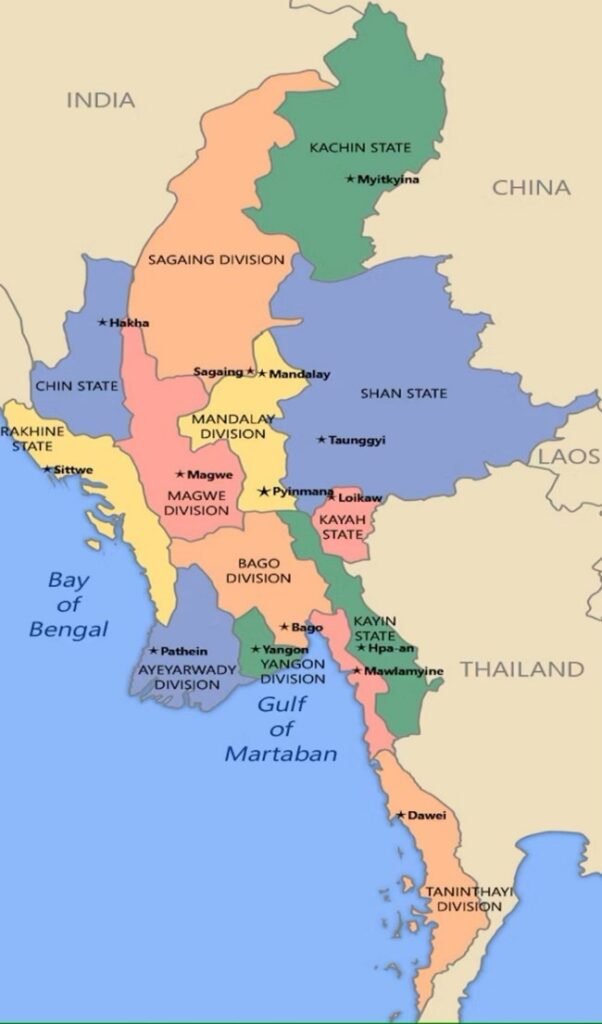(General Studies III – Environment Section – Conservation, Environmental Pollution and Degradation, Environmental Impact Assessment. Disaster and Disaster Management.)
- The recent tragedy in Kerala, where landslides claimed at least 122 lives and injured 197, has once again underscored the severe threat posed by such natural disasters in India.
- The landslides, which flattened villages in Wayanad and caused extensive damage, are a stark reminder of the vulnerabilities of regions prone to such events.
- The cascading wave of mud, boulders, and uprooted trees buried villages and altered river courses, highlighting the devastating impact of landslides.

What is a Landslide?
A landslide is a geological phenomenon involving the downward movement of rock, soil, and debris on a slope. It can vary in scale from small, localized shifts to massive and destructive events. Landslides can occur on both natural and man-made slopes, often triggered by factors such as heavy rainfall, earthquakes, volcanic activity, human activities (like construction or mining), and changes in groundwater levels.
Types of Landslides –
- Slides: Movements of soil or rock along a rupture surface or zone of weakness, including Rotational Slides (Rupture surface is curved) and Translational Slides (Rupture surface is planar).
- Flows: Movements of soil or rock with a large amount of water, making mass flow like a fluid. Subtypes include Earth flows, Debris flows, Mudflows & Creep.
- Spreads: Lateral extension and cracking of soil or rock, often caused by liquefaction or plastic deformation.
- Topples: Forward rotation and free-fall of mass from a vertical or near-vertical cliff or slope.
| Western Ghats | Himalayan region |
| Heavy mining activities in the western ghat region is a major factor leading to landslides. Deforestation for settlements and cutting for road construction. Anthropogenic activities gave rise to anomalous slopes, and due to gravitational pull and rain, the overlying material comes down. Concentration of heavy rainfall in concentrated areas. Windmill projects have led to huge fractures on the mountains, loosening structures. Eg: Ratnagiri, Satara, Idduki etc. | Himalayas are young, fragile mountains still growing, hence susceptible to natural landslides. The sediments in the mountains are not consolidated, and are loose. There is tectonic activity, with the plate moving up which causes instability; thus, landslides during dry seasons. The steep and sharp slope in the Himalayas are major factors for the landslides in the region. Anthropogenic factors in Himalayas include jhum cultivation, deforestation etc. Eg: Pithoragarh & Rudraprayag etc. |
- Falls: Detachment from a steep slope or cliff, descending by free-fall, bouncing.
Government Initiatives to Mitigate Landslide Risks –
- National Landslide Risk Management Strategy (2019): Comprehensive risk reduction and management, including hazard mapping, monitoring, early warning systems, awareness programs, and capacity building.
- Landslide Risk Mitigation Scheme (LRMS): Financial support for site-specific mitigation projects, focusing on disaster prevention, mitigation, and R&D in monitoring critical landslides.
- Flood Risk Mitigation Scheme (FRMS): Pilot projects for developing model multi-purpose flood shelters & river basin-specific flood early warning systems.
- National Guidelines on Landslides and Snow Avalanches: NDMA guidelines for mitigating landslide risks, covering hazard assessment, vulnerability analysis, risk management, and community participation.
- Landslide Atlas of India: Document by NRSC providing details of landslides, including damage assessment of specific locations.
Way Forward –
- Resilience Building: Develop resilience against geo-hazards through real-time monitoring and data collection.
- Leveraging Technology for Effective Monitoring: Use web-based sensors and prioritize monitoring in densely populated areas.
- Integrated Early Warning System (EWS): Develop EWS using AI and ML algorithms to predict and alert communities about impending hazards.
- Formation of Himalayan States Council: Establish a collaborative platform for disaster management authorities to share knowledge and resources.
- Simulation and Hazard Assessment: Focus on simulating and assessing hazard scenarios to understand risks and formulate mitigation strategies.
- Knowledge Dissemination: Share findings of assessments across states for a comprehensive understanding of challenges and solutions.
- Ecosystem Protection: Promote sustainable practices and responsible resource use to safeguard the natural environment.
- Sustainable Socio-Economic Development: Balance resource exploitation with ecological preservation for long-term viability.
- Environmental Considerations: Proper town planning, effective drainage systems, scientific slope management, and use of retaining walls.
- Building Codes and Assessment: High-resolution mapping and load-bearing capacity assessment to create effective building codes.
- Sustainable Tourism: Promote environmental awareness, conservation, and responsible tourism to reduce landslide risks.
- Building Sustainable Government Projects: Conduct environmental assessments, use eco-friendly technologies, involve local communities, and promote stakeholder awareness.
Addressing the challenges posed by landslides requires a multi-faceted approach involving technological, ecological, and socio-economic strategies. By leveraging technology, fostering collaboration, and promoting sustainable development, we can mitigate the risks and enhance resilience against landslides in vulnerable regions like the Himalayas and the Western Ghats.


